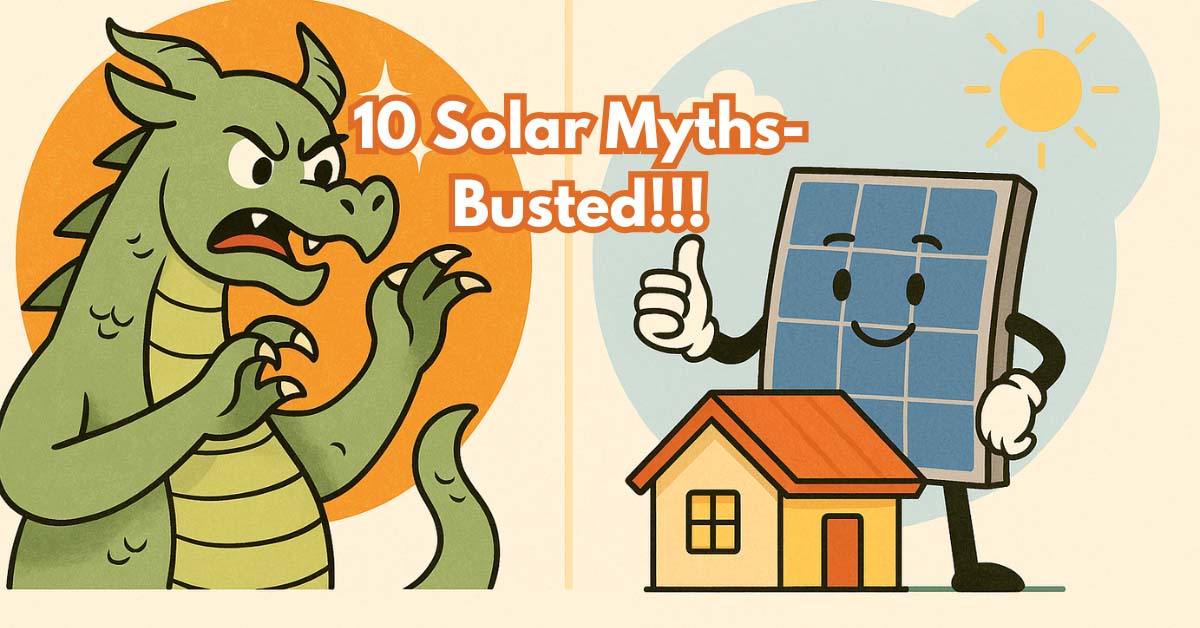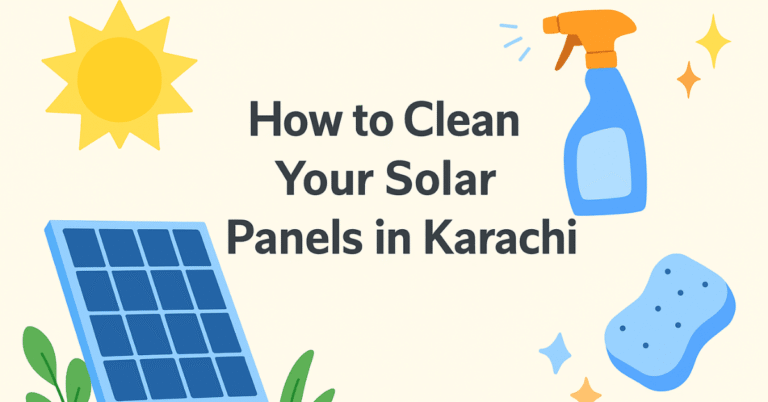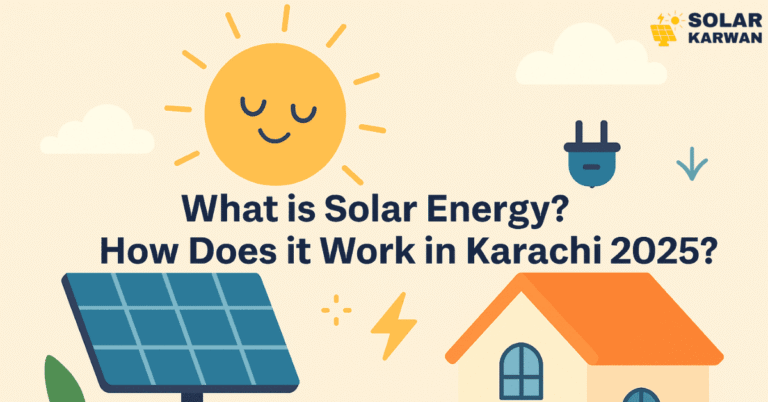Solar myths are everywhere in Karachi. From chai dhabas to drawing rooms, people pass around outdated advice like it’s breaking news—”Solar doesn’t work in rain,” “It’s only for rich people,” “Loadshedding? You’re doomed.”
Sound familiar? These Solar Myths have kept too many smart Karachiites stuck paying massive electricity bills when they could be saving thousands every month.
But today, we’re flipping the switch. This isn’t your average boring energy blog.
We’re Solar Karwan, and we’re here to bring you the facts and the savings. Let’s turn the lights on and expose the truth.
- Solar Doesn't Work in Karachi
- Solar shuts off during loadshedding
- Solar only makes sense for big houses
- Solar is too expensive
- Solar won't work when it's raining
- Solar Panels are high-maintenance
- Solar can’t run ACs or heavy appliances
- Panels wear out after a few years
- Net metering is too complicated
- Solar panels will damage my roof
- Final Thoughts: It’s Time to Unlearn the Solar Myths
Solar Doesn’t Work in Karachi
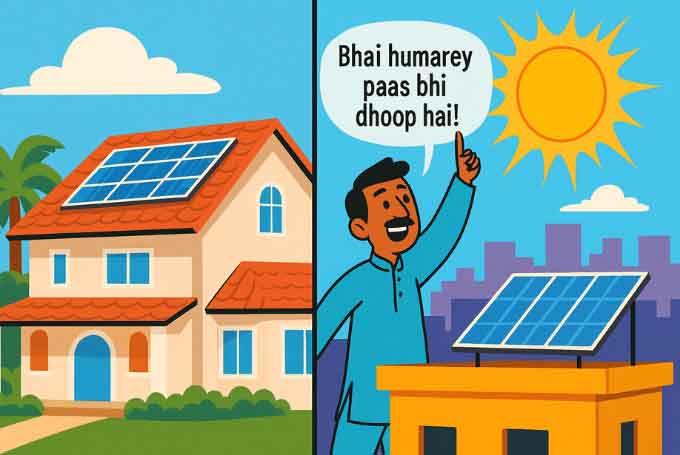
BUSTED: This one’s a classic. People often assume that solar panels only work in places like Dubai, California, or some other magical land with constant sunlight.
However, here’s the truth: Karachi is one of the sunniest cities in South Asia, receiving over 3,000 hours of sunlight per year. That’s more than enough to power homes, shops, and your Netflix marathons.
Solar works on sunlight, not on temperature. So, the heat? No problem.
Pakistan’s solar infrastructure has improved dramatically, and with local approvals, net metering, and Tier 1 panels available, there’s zero reason to believe Karachi is behind.
👉 Read this article: Karachi Solar Guide: Prices, Setup, Types & Net Metering Explained
Solar shuts off during loadshedding

BUSTED: We hear this one a lot. “But yaar, jab batti hi nahi hai, toh solar kya karega?”
Here’s the thing: solar panels generate power from sunlight, not the grid. If your system is set up correctly with a hybrid inverter and batteries, you’ll keep running during loadshedding like it’s no big deal.
What people confuse is that on-grid systems do shut off for safety when KE’s down.
However, the system avoids sending electricity back to the grid to protect workers.
Add a hybrid setup, and your panels + battery combo will keep the lights on, fans spinning, and even your AC humming peacefully.
👉 Read this article: Home Solar Setup Karachi: Easy Step-by-Step Guide
Solar only makes sense for big houses
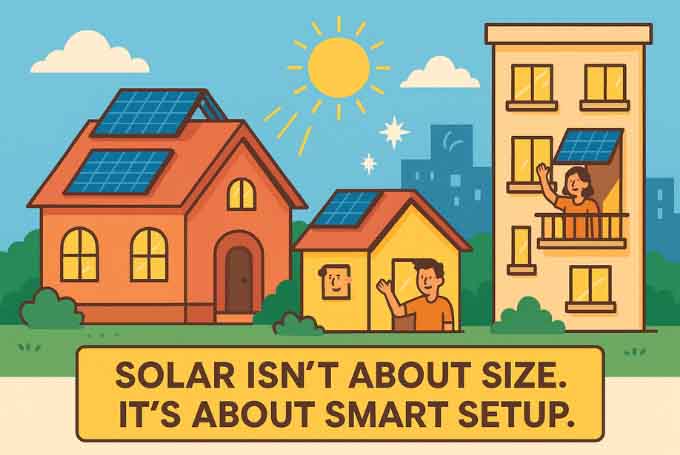
BUSTED: We appreciate bungalows as much as anyone, but you don’t need a large villa to take advantage of solar energy.
Even small rooftops in areas like Gulshan, FB Area, or apartments in DHA Phase 2/Burnsroad can support 3–5 kW systems.
This capacity can significantly reduce your monthly utility bill, saving you thousands of rupees. Additionally, Apartment dwellers are quickly adopting solar energy solutions.
With options like shared solar, independent inverter and battery kits, or balcony-mounted setups, solar energy is becoming accessible for everyone.
Size doesn’t matter. What matters is how smartly you size your system.
👉 Read this article: Is Solar Worth It for Apartments in Karachi?
Solar is too expensive
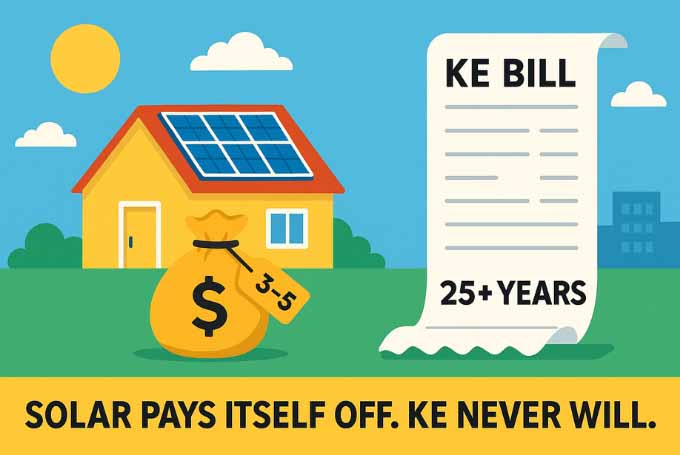
BUSTED: Solar isn’t a luxury anymore, it’s an investment.
While it used to cost a fortune five years ago, prices have dropped by nearly 40%, and net metering has changed the game.
What once took 10 years to pay off now takes just 3 to 5 years, depending on your usage.
More importantly, it’s not just about spending money, but it’s about saving it every month for the next 25+ years.
That’s more reliable than your fuel backup, and way quieter too.
Plus, KE rates aren’t going down anytime soon, are they?
👉 Read this article: 5 Signs You’re Ready to Install a Solar System at Home in Karachi
Solar won’t work when it’s raining
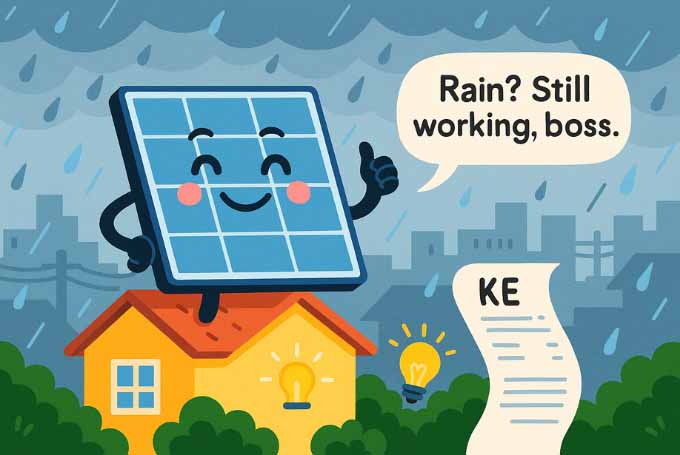
BUSTED: Ah, yes, the classic “bad weather kills solar” theory.
Solar panels do not require intense sunlight to function. They need light, regardless of the conditions. Even during cloudy or rainy days, they continue to generate electricity, though at a slightly lower capacity.
Think of it like this: if you can see outside without switching on a bulb, your panels are doing their job.
In fact, some modern solar technologies are optimized for low-light performance, so Karachi’s occasional monsoon spell won’t crash your system.
Solar Panels are high-maintenance
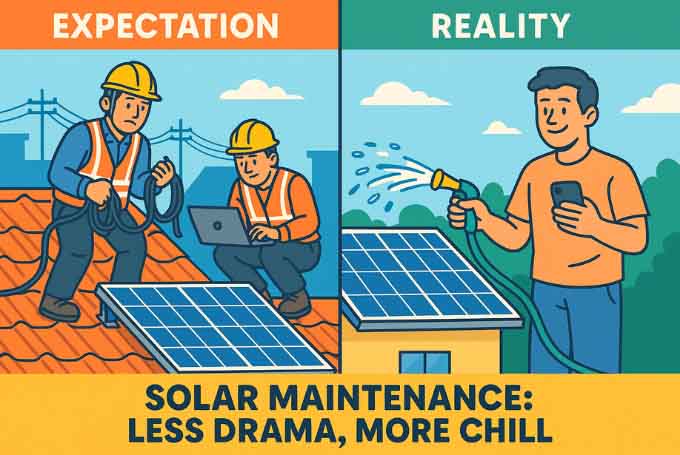
BUSTED: If wiping off a little dust counts as “high maintenance,” then yes, go ahead and panic.
In reality, most solar panel owners only rinse their panels with water once a month, and that is all.
No oiling, no filters, no engineers crawling on your roof every week.
Most Tier 1 panels used in Karachi are designed to resist dust and humidity, and some even come with anti-soiling coatings.
Your job? Keep them clean-ish and occasionally check your inverter screen.
Honestly🙄, your car and your phone are fussier than your solar system.
Solar can’t run ACs or heavy appliances
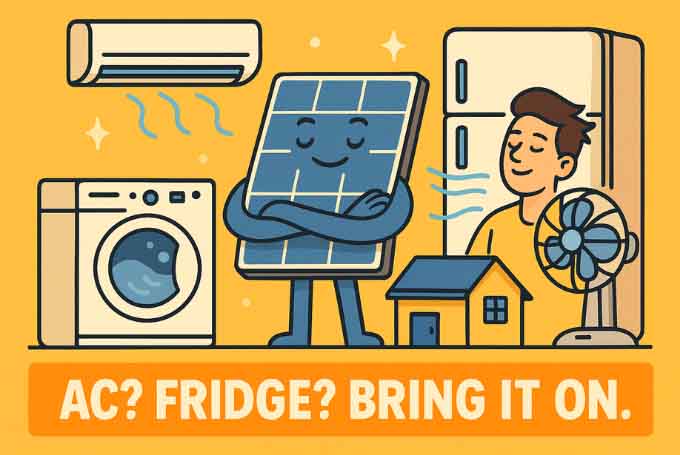
BUSTED: This one’s just outdated. Modern solar systems in Karachi can regularly power 1–2 ACs, washing machines, refrigerators, and even water motors, especially when connected to net metering.
It all comes down to system sizing. A 3kW system might handle lights + fans + a small fridge.
A system over 5 kW? That’s where the big stuff comes in. Want to fully utilize AC mode during the day? It’s easy with the right inverter and sufficient panel count.
Want to know which solar system size and type is right for you?
👉 Read this article: Home Solar Setup Karachi: Easy Step-by-Step Guide
Panels wear out after a few years
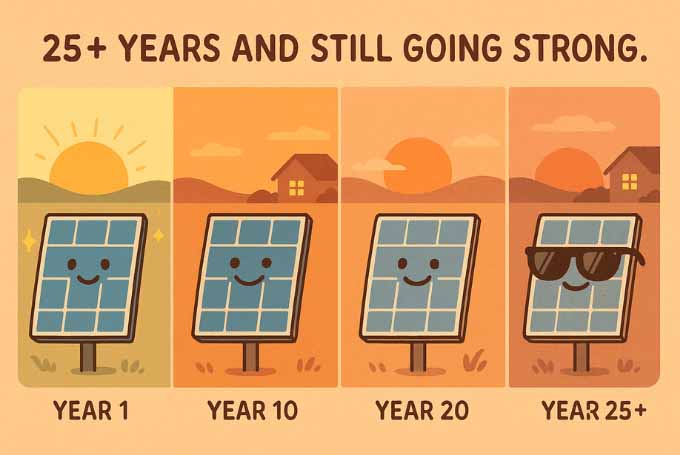
BUSTED: Solar panels are not just a trend; they represent a long-term investment.
High-quality panels today come with performance warranties lasting 25 to 30 years, and many still operate at 80 to 90% efficiency even after two decades.
These things are built to last through rain, dust, pigeons, and politics. The only part that might need earlier replacement is the inverter, usually after 8–12 years, depending on brand and use.
Still wondering which brand will stick around?
👉 Read this article: Best Solar Panel Brands in Karachi 2025
Net metering is too complicated
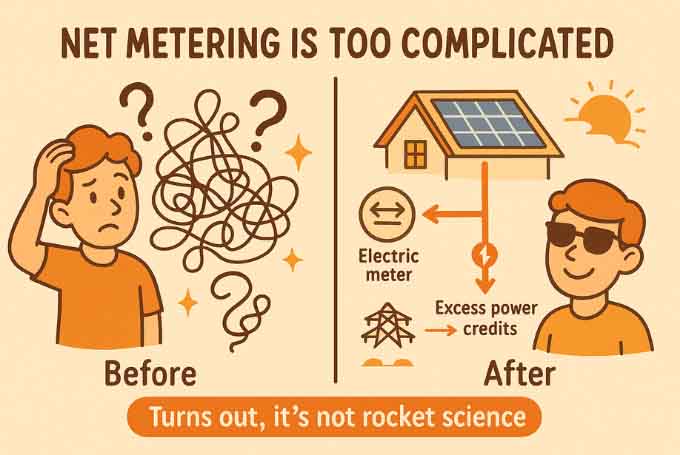
BUSTED: Net metering is a breeze when you work with the right installer. You don’t have to stand in any K-Electric lines or bribe your neighbor’s cousin’s chacha.
Your installer handles the entire process, from paperwork to final KE inspection.
Once approved, you get a bi-directional meter that measures what you consume and what you send back.
That means credits on your bill = savings in your pocket.
Still feel lost and confused? You’re not alone—so we broke it down.
👉 Read this article: Karachi Solar Guide: Prices, Setup, Types & Net Metering Explained
Solar panels will damage my roof
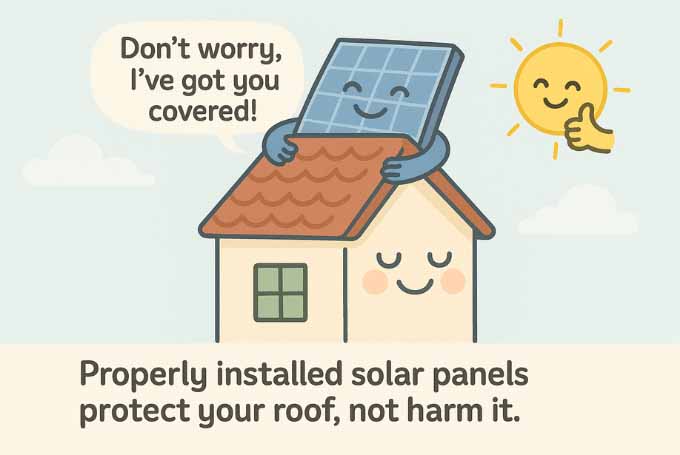
BUSTED: When installed correctly, solar panels do not damage your roof; rather, they protect it.
They create a shaded layer that helps preserve the area beneath by blocking direct sunlight and rainfall.
Professional installers utilize non-penetrative mounting systems whenever possible and ensure all components are sealed to prevent leaks.
This can prolong the lifespan of your roof, as it won’t be constantly exposed to the intense heat of Karachi.
Final Thoughts: It’s Time to Unlearn the Solar Myths
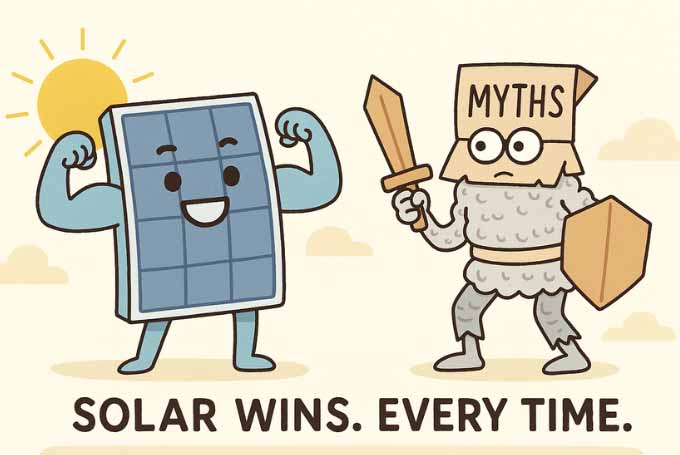
You made it! Which means you’re already miles ahead of anyone who still thinks solar only works in Dubai and believes in all the stupid Solar Myths 💁♂️
Solar power isn’t a mystery or a gamble; it is a well-tested, money-saving, bill-slaying solution that works beautifully in Karachi’s climate.
Sure, there’s a bit of paperwork and planning involved, but that’s true for anything worth having, like your passport or a decent biryani recipe.
📞 Still Have Doubts? Let’s Talk

At Solar Karwan, we help Karachiites like you figure out:
- ✅ What system size fits your home or apartment
- ✅ How to deal with net metering (without pulling your hair out)
- ✅ Which brands are actually worth the investment
- ✅ How much you’ll really save
📩 Reach out to us and let’s plan your solar journey, the smart way.

